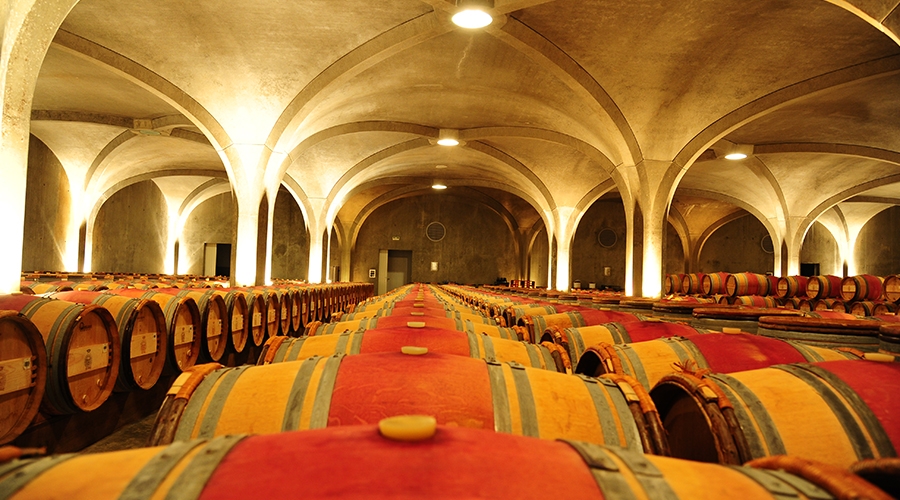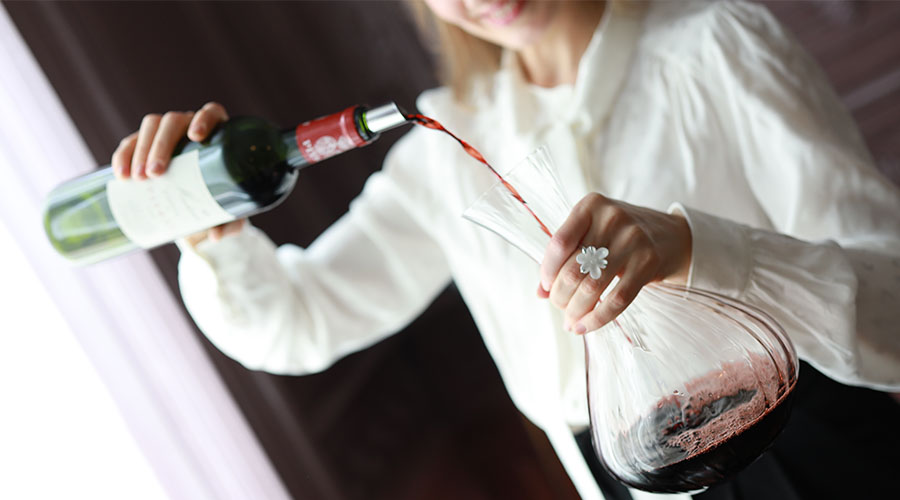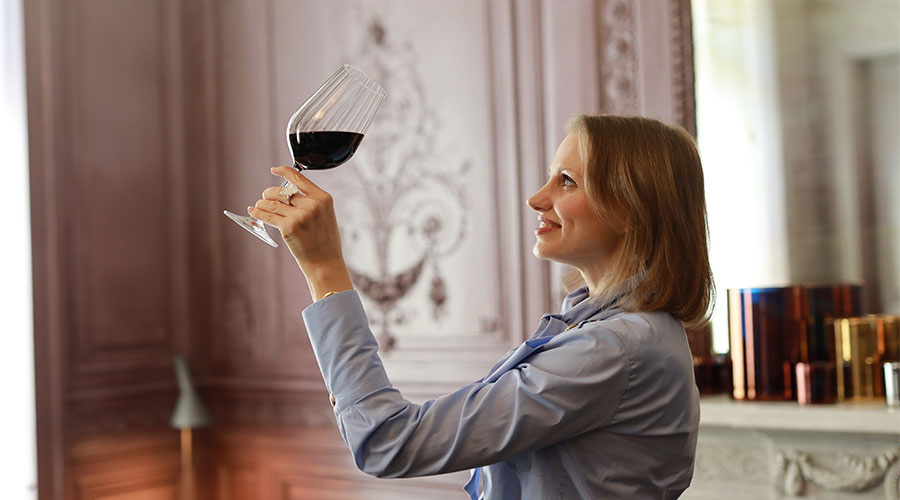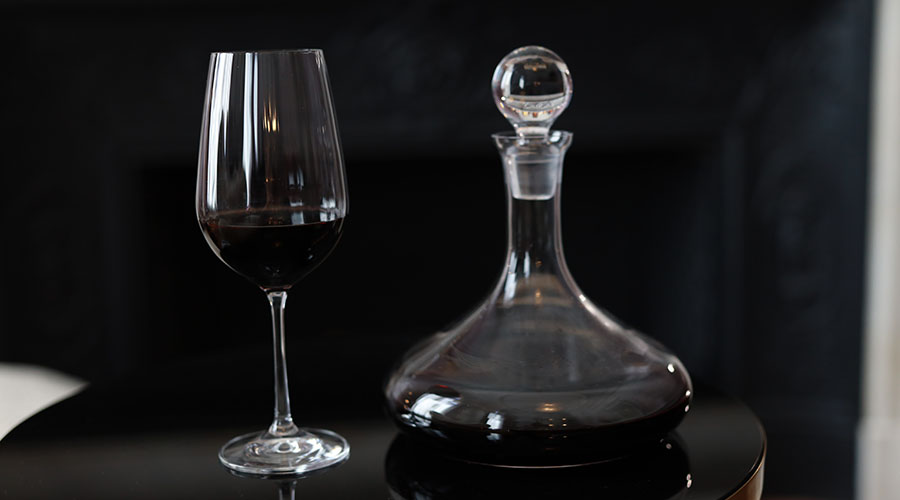
Medoc or Saint-Emilion
10 March 2024
Wine decanting
Wine decanting is a very delicate procedure that requires special skill. It is thanks to decanting that the wine reveals its full potential, demonstrating the entirety of its flavour, and, in the case of old vintages, it is also the best way to separate the sediment.
Most wines can be served directly from the bottle, but there is a specific category of wines that only improve if they are allowed to breathe beforehand in a special wine decanter.
For example, young red wines, after spending some time in the decanter, become rounder, gaining in tannic smoothness and, consequently, a more pleasant taste. Nevertheless, if the wine is left too long, it can lose its freshness and vibrancy. The same applies to mature wines, for which aeration can be beneficial, reviving their bouquet, but can also make them harsher, stripping them of aromas due to prolonged contact with the air.
So, what to do?
Decant wine or not?
In reality, it’s very simple: as with everything, one must know when to stop. If you are about to taste a young wine with powerful tannins, you can confidently transfer it to the decanter, certain that the wine will not suffer. During the first hour (the second and sometimes even the third, depending on the brand and vintage), the wine will oxygenate and present itself in all its fragrant beauty at the moment of tasting. It is preferable to use a decanter with a wide, flat base, in which the young wine will open up faster and better.
Conversely, with well-matured wines, over 10 years old, it is better to be more cautious… Like elderly and respected figures, they require special attention and care. The fact is, the older the wine, the faster it oxidizes. This is linked to its tannic base which weakens over the years, making the wine more vulnerable to oxidation. Therefore, to avoid any risk, it is best to taste the wine first, and, if necessary, to let it breathe a little in the decanter, immediately proceeding with the tasting. Such a wine requires a decanter with a narrower, rounded shape at the base to prevent too much oxygen from being introduced.

Now let’s talk about the sediment itself. What is it composed of? There are several types of sediment: crystalline, which is typical of light white wines, and the red-coloured, “sandy” sediment in red wines. The crystalline granules that settle at the bottom of the container are formed by potassium tartrate following a sudden drop in temperature during vinification. They are completely harmless to humans and, during serving, it is sufficient to pour the wine into the glasses gently and carefully so that all the residue remains at the bottom of the bottle.

As a general rule, white wines, with the exception of certain varieties, do not need decanting. As for red wines, the sediment is primarily an indication of the beverage’s age and is composed of oxidized particles of tannins and other coloured organic matter. It must be said that sediment in aged red wines is an excellent sign of quality. It indicates that the wine has not undergone aggressive filtration and has therefore retained its full body and mineral properties. Consequently, when a large amount of sediment is present, decanting is necessary. Moreover, the wine must be transferred with extreme delicacy, ensuring that a maximum of sediment remains in the bottle, and that only the clear wine reaches the decanter. This is why it is advisable for the wine to remain in a vertical position for at least two days before serving, thereby allowing the sediment to settle.
Below are examples of wines for which prior decanting is desirable:
Wines to Decant
| Mature Red Wines | Young Red Wines | White Wines |
| Bordeaux: Premiers Grands Crus Classés, Grands Crus Classés, Saint-Émilion, Médoc, Graves, Pomerol. Rhône Valley: Hermitage, wines from the northern part of the region, Châteauneuf-du-Pape. Italy: Barolo, Brunello di Montalcino, Chianti. Spain: Vega Sicilia, some Penedès and Rioja wines. New World Countries: Cabernet Sauvignon, Syrah from California and Chile. | Bordeaux: Wines from good vintages from small estates. Burgundy: Beaujolais Crus, small estates in communal appellations. Rhône Valley: All red wines. Other French wines: Cahors, Chinon, Faugères, all wines with good acidity, rich in tannins, and concentration. | Young white wines from the Loire Valley, Graves region in Bordeaux. Alsace wines (Vendanges Tardives). Great wines from the Rhine and Mosel. Rioja wines aged in barrels. |
| WINES NOT TO DECANT: Very old Bordeaux and Burgundy wines, Champagnes, and other sparkling wines. | ||
KN

Would you like to learn more about wine? Choose a wine tour with Taste and Travel
